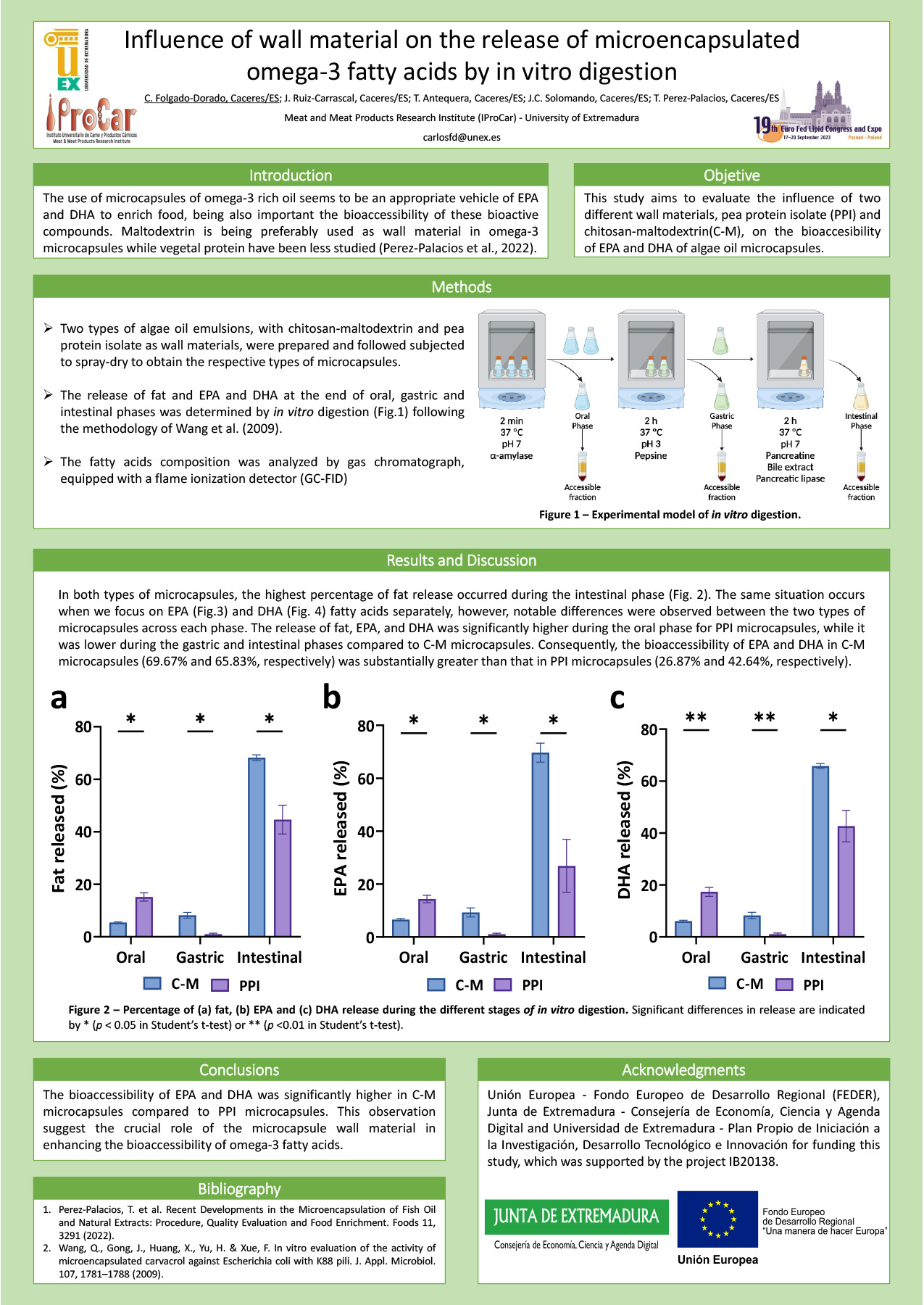The use of microcapsules of omega-3 rich oil seems to be an appropriate vehicle of EPA and DHA to enrich food, being also important the bioaccessibility of these bioactive compounds. Maltodextrin is being preferably used as wall material in omega-3 microcapsules while vegetal protein have been less studied1 . Therefore, this study aims to evaluate the influence of the wall material of algae oil microcapsules on the bioaccesibility of EPA and DHA. For that, two types of algae oil emulsions (with chitosan-maltodextrin and pea protein isolate as wall materials) were prepared and followed subjected to spray-dry to obtain the respective types of microcapsules (C-M and PPI, respectively). The release of fat and EPA and DHA at the end of oral, gastric and intestinal phases was determined by in vitro digestion2 . In both types of microcapsules, the highest percentage of fat and quantity of EPA and DHA released were found in the intestinal phase. However, there were significant differences between the types of microcapsules at each phase. The release of fat, EPA and DHA was higher at oral phase and lower at gastric and intestinal phases in PPI than in C-M microcapsules. Thus, the bioaccessibility of EPA and DHA in C-M (69.67% and 65.83%, respectively) was higher than in the PPI microcapsules (26.87% and 42.64%, respectively). These findings suggest the importance of the wall material of the microcapsules to enhance the bioaccessibility of the omega-3 fatty acids.
1. Perez-Palacios, T. et al. Recent Developments in the Microencapsulation of Fish Oil and Natural Extracts: Procedure, Quality Evaluation and Food Enrichment. Foods 11, 3291 (2022).
2. Wang, Q., Gong, J., Huang, X., Yu, H. & Xue, F. In vitro evaluation of the activity of microencapsulated carvacrol against Escherichia coli with K88 pili. J. Appl. Microbiol. 107, 1781–1788 (2009).
